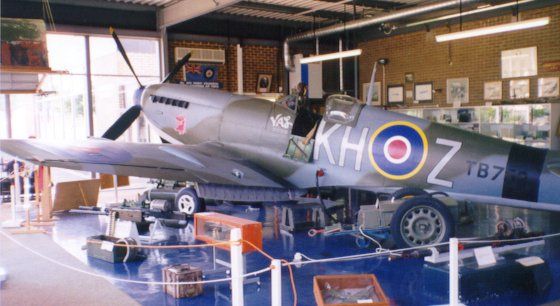
Designer Designer : R.J.Mitchell
Type: Single Seat Fighter
Description : Low Wing Monoplane
Wingspan : 36 feet 10 inches ( 11.23m )
Length : 29 feet 11 inches ( 9.12m )
Height (max): 11 feet 5 inches ( 3.48m )
Wing Area : 242 sq feet ( 22.48m2 )
Weight empty : 4332 lb ( 1965 kg )
Weight loaded : 5750 ( 2609 kg )
Power Plant : Rolls Royce Merlin II V12 liquid
cooled
piston engine
B.H.P. :1030 hp
Armament : 8 fixed wing mounted 0.303 Browning
Machine guns
Performance
Maximum speed : 362 mph
Initial Climb rate : 2,300 ft per min ( 700
m per min )
Ceiling : 31,900 ft
Range : 395 miles
First Flight : 5 March 1936
Service Entry : 4th of August 1938
SQUADRONS THAT WERE ALLOCATED THE SPITFIRE